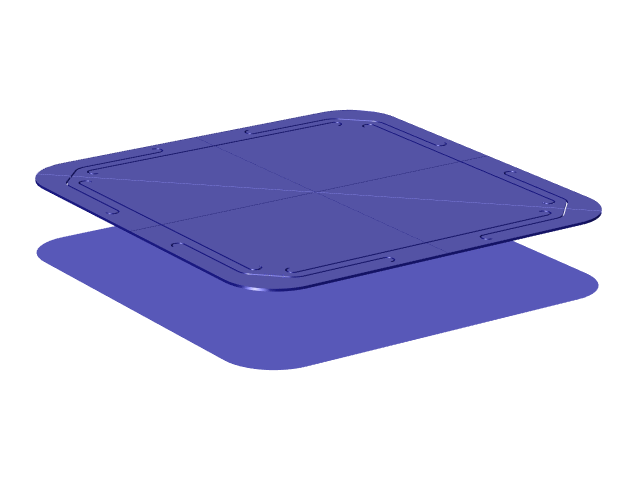At ASCEE, we use Computer Aided Engineering (CAE) to solve complex acoustic and structural problems. Simulations help you understand how your designs will perform before building prototypes — saving time, reducing costs, and avoiding potential problems early in the development process.
ASCEE is COMSOL Certified Consultant
We are proud that COMSOL has acknowledged ASCEE as one of their "COMSOL Certified Consultants" in acoustic / structural modeling. A key indicator of the quality of our work and accomplishments.

MEMS Transducer Multiphysics Simulation

MEMS devices often involve complex interactions between multiple physical phenomena. Our simulation capabilities can capture these coupled effects in a single model, as demonstrated in this electrostatic MEMS transducer example.
The animation shows a membrane actuated by electrostatic forces. As the membrane moves downward, the thin air layer underneath gets compressed, creating a squeeze film that generates significant damping forces opposing the motion. Eventually, the membrane almost makes contact with the substrate, introducing contact mechanics that arrests the movement.
This seemingly simple device actually requires solving four different physics simultaneously:
- Electrostatics - Computing the attractive forces between charged electrodes
- Structural mechanics - Calculating membrane deformation and stress distribution
- Fluid dynamics - Modeling the squeeze film damping in the narrow air gap. In this case using the Reynolds equation
- Contact mechanics - Using a Hertzian contact model to simulate the contact between surfaces
These physics cannot be modeled separately because they are fundamentally coupled. The electrostatic force depends on the gap size, the squeeze film pressure depends on the membrane velocity and position, and the contact forces depend on the deformation. Accurate modeling requires solving all physics together, which is where our multiphysics simulation expertise becomes essential.
What our clients say about us
"We have been working with Dr. Anne de Jong from ASCEE (The Netherlands) since 2020. He is a brilliant physicist and a true expert in acoustics, fluid dynamics, and micro-fluidics. Anne has been instrumental in building both COMSOL as well as hybrid and Python-based models for simulating our MEMS devices.
One of his remarkable contributions was reducing COMSOL’s simulation time from days to minutes by replacing certain FE domains with carefully derived analytical formulas, all while maintaining the accuracy of the model. This achievement has had a transformative impact on our workflow.
In the past couple of years, Ir. Casper Jansen has joined ASCEE, and together with Dr. de Jong they have developed unique measurement equipment to help us assess and qualify thin, acoustically transparent, protective membranes. The development was completed on time and on budget, and the performance of the equipment has been nothing short of remarkable. It has been a pleasure to work with both Anne and Casper.
Throughout our collaboration, Anne has been an uncompromising professional. I have consistently experienced only the highest quality of work, with every technical conclusion backed by extensive and meticulous documentation. His dedication, expertise, and ability to deliver practical, elegant solutions make him an invaluable partner."
— Yuval Cohen, CTO of AudioPixels Ltd.